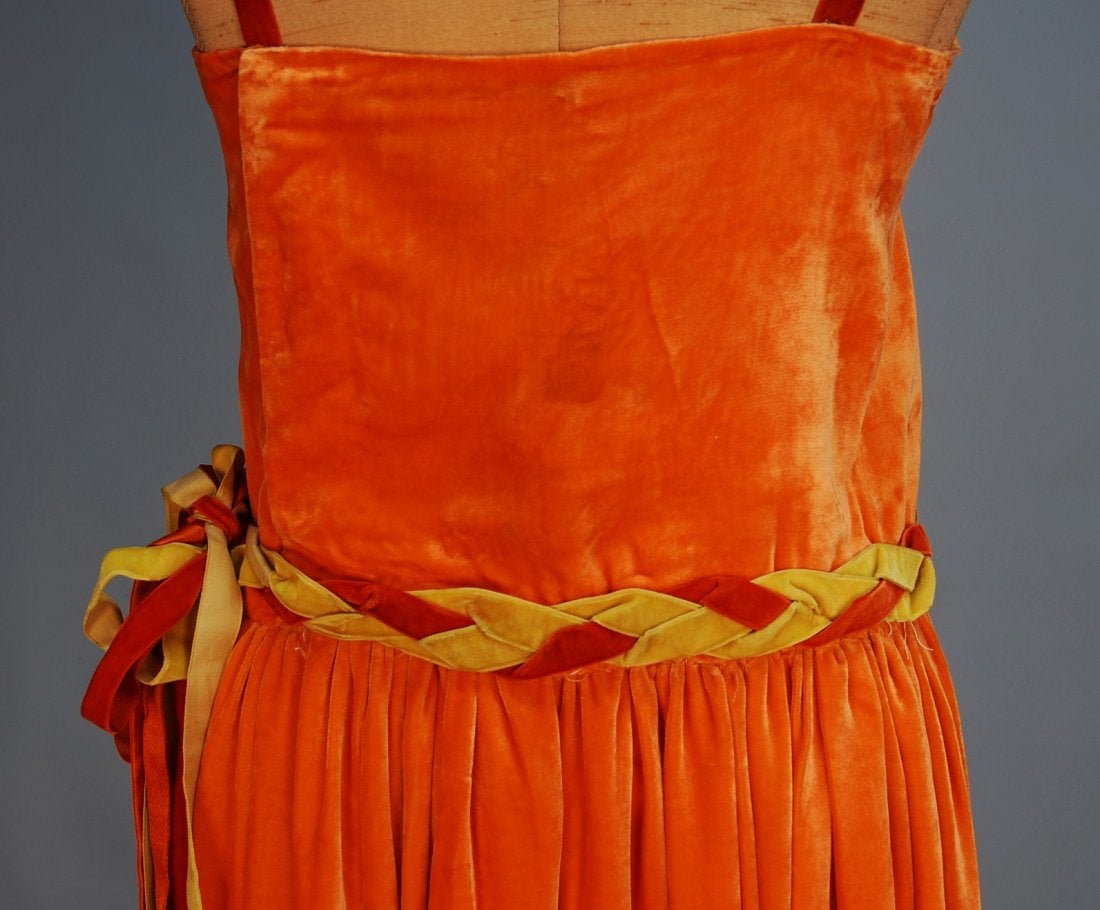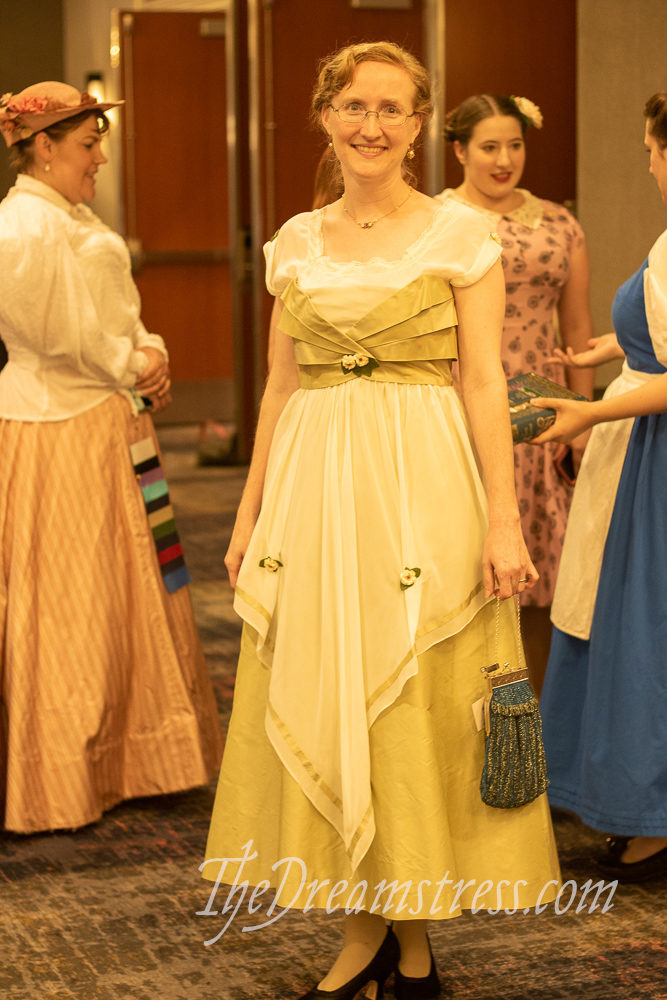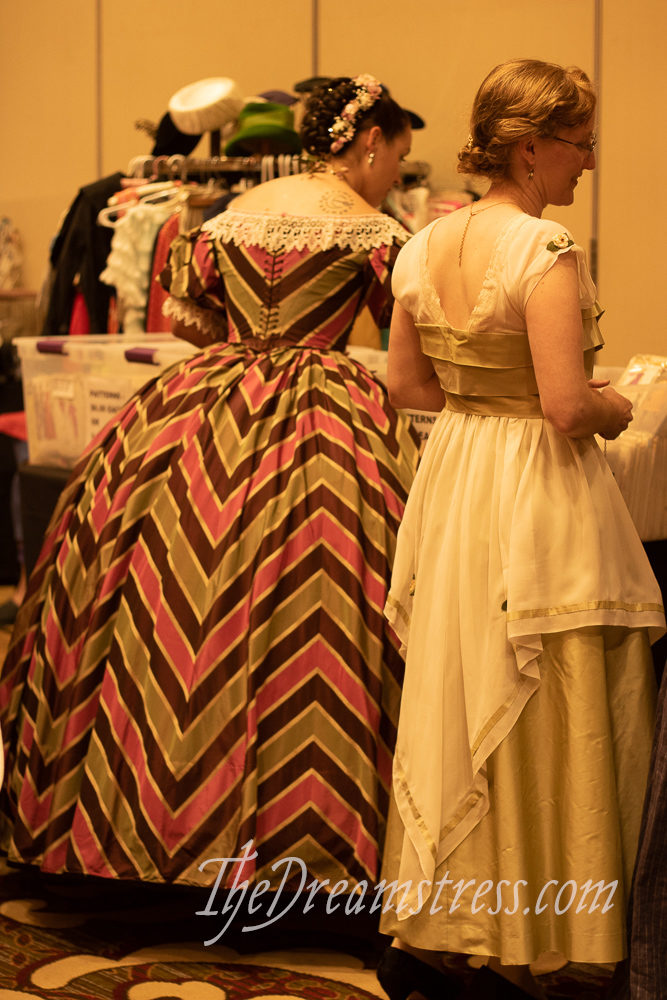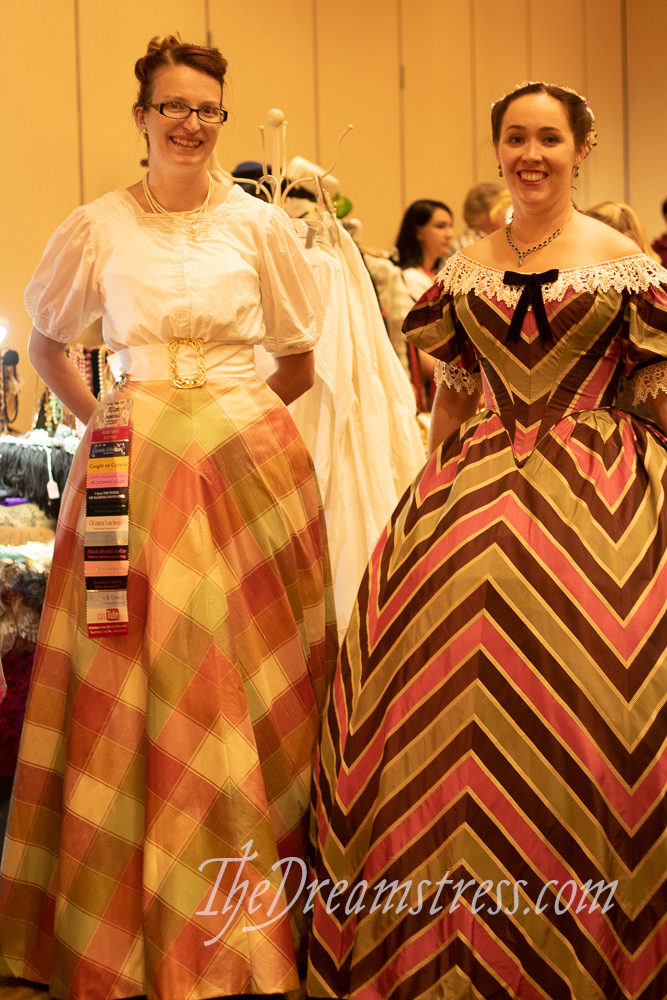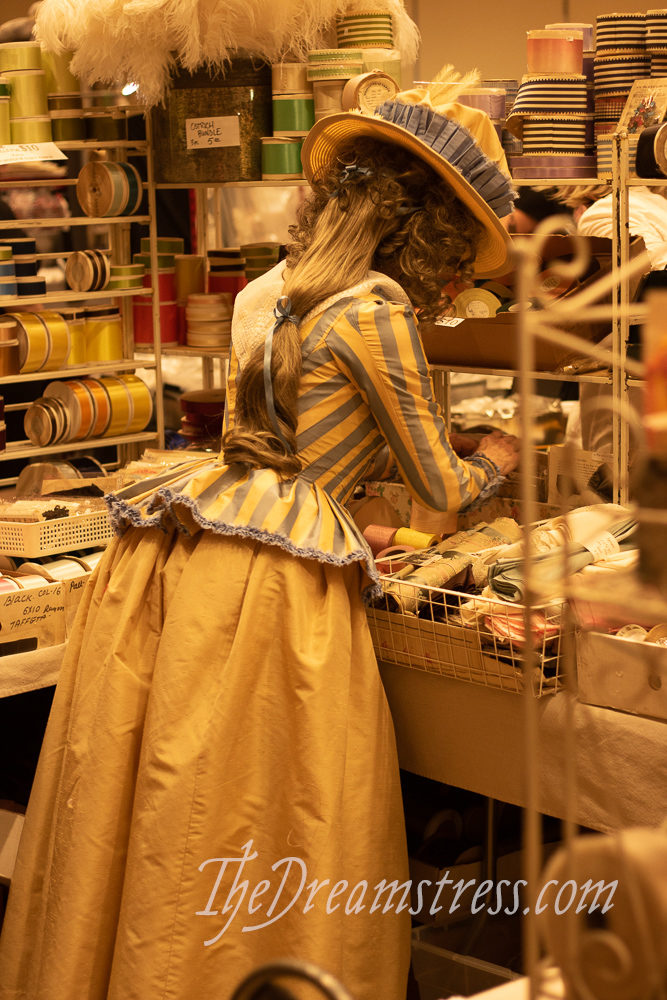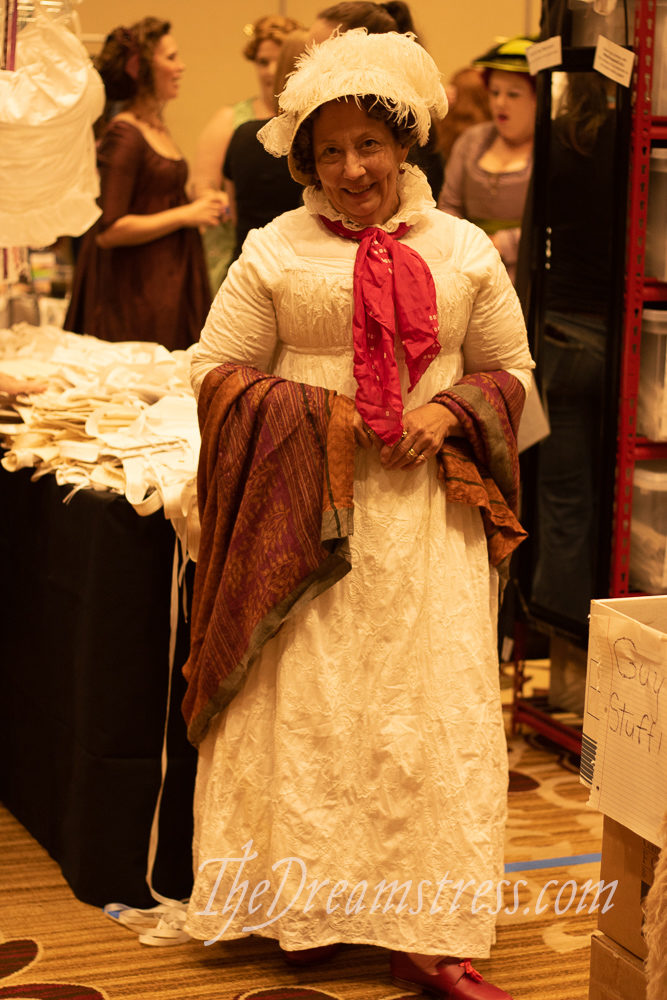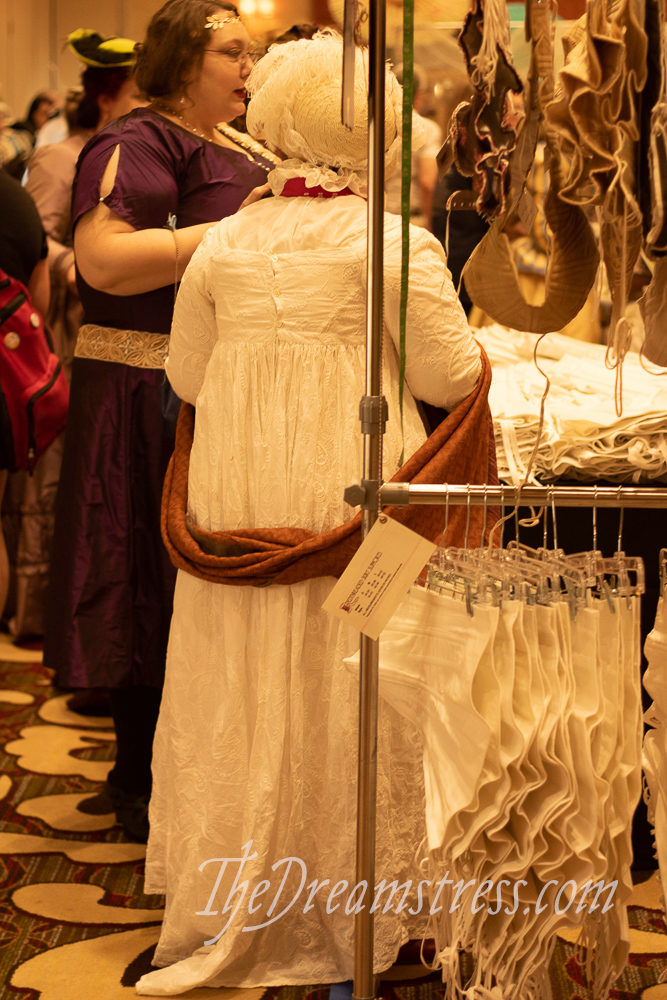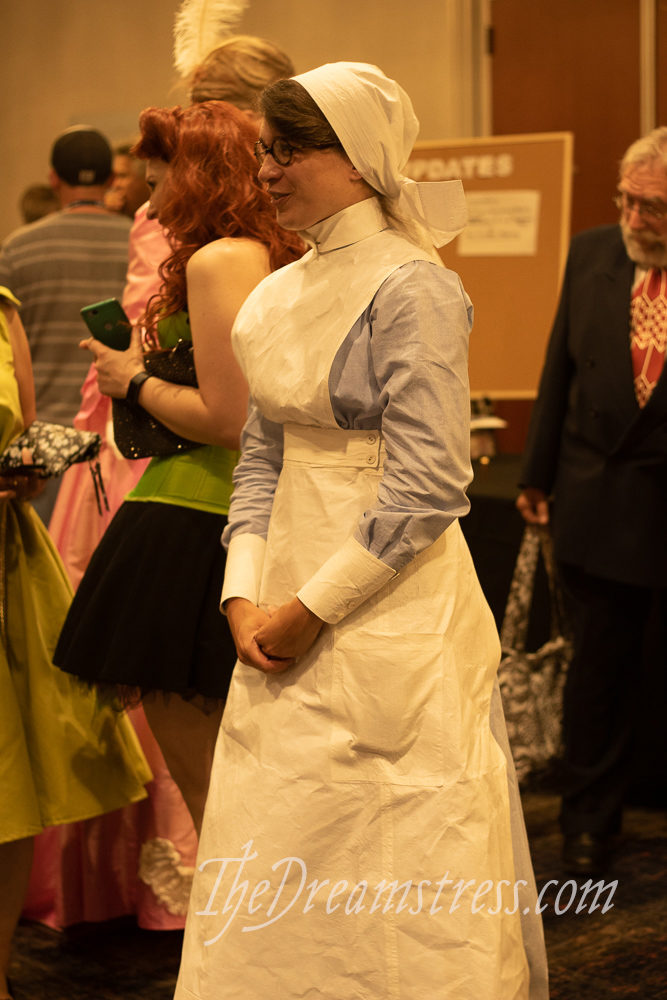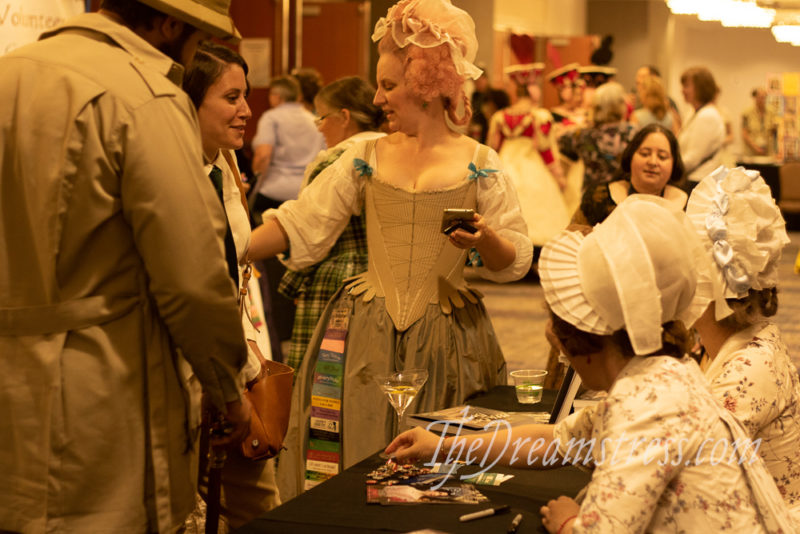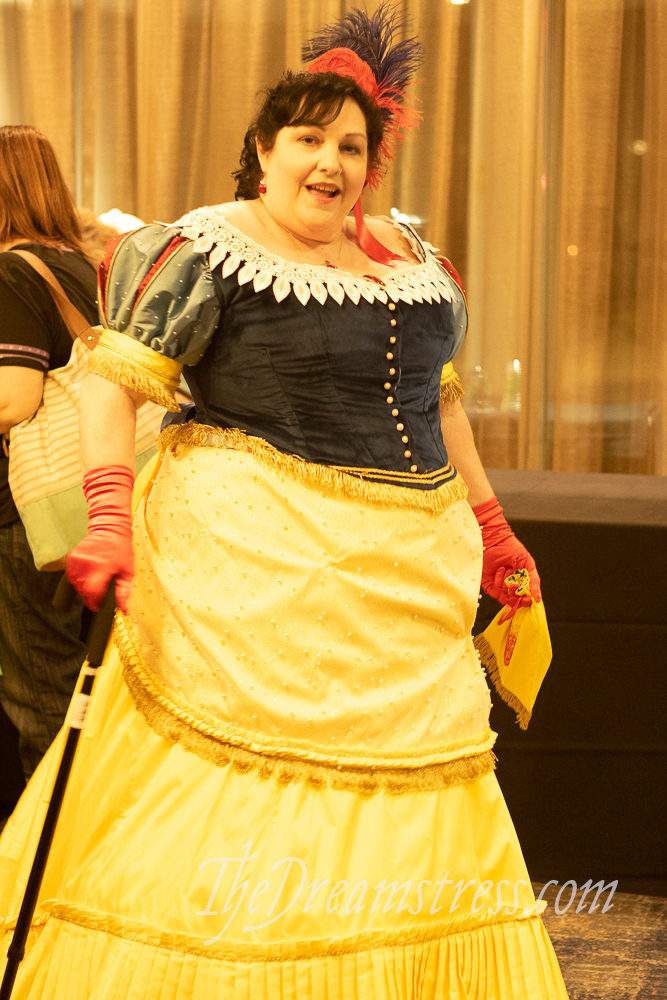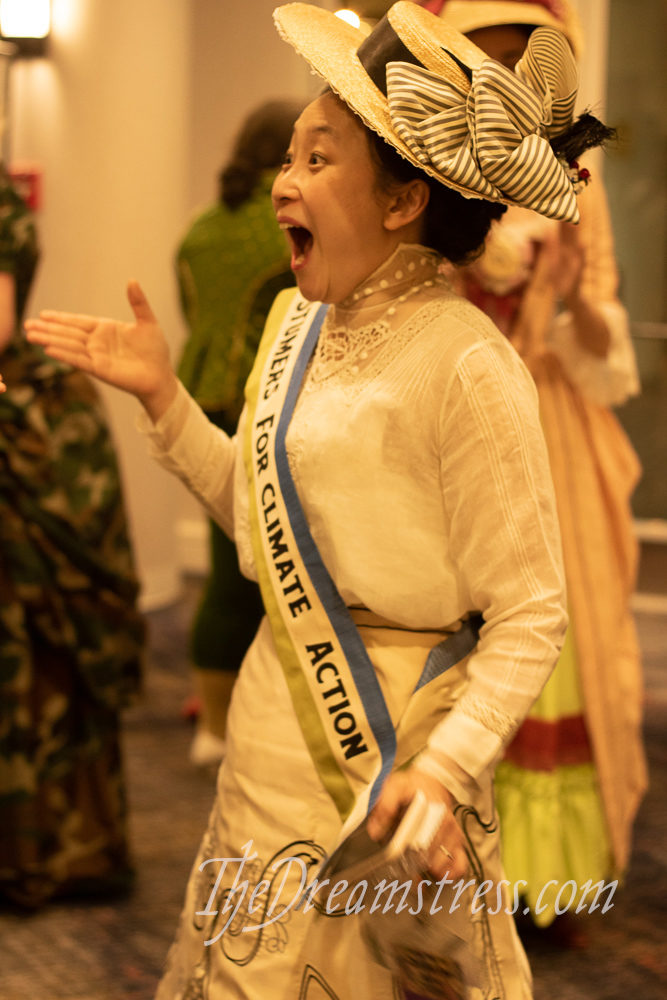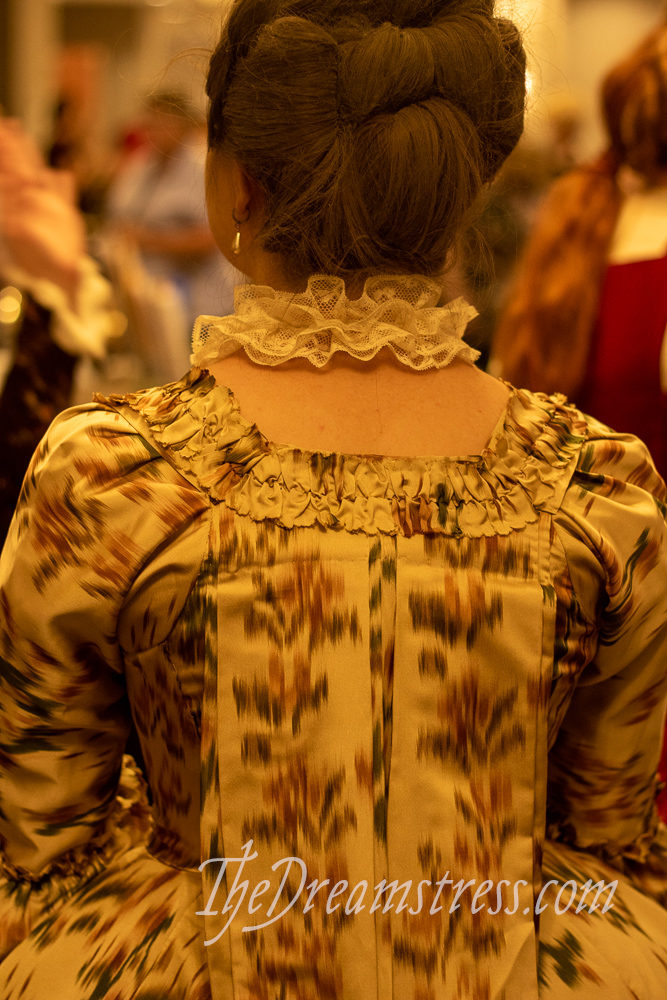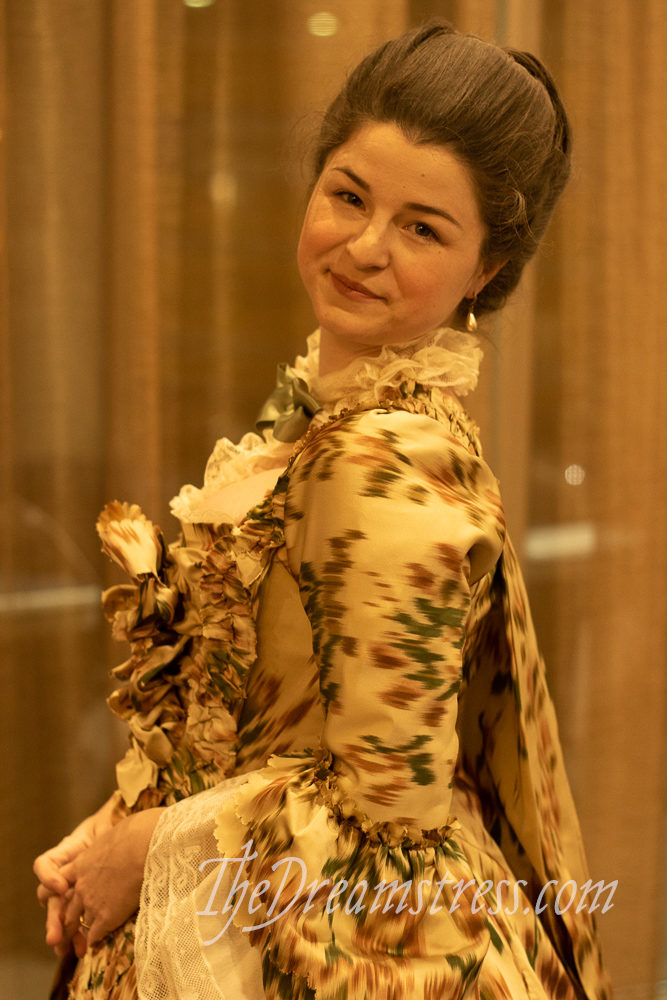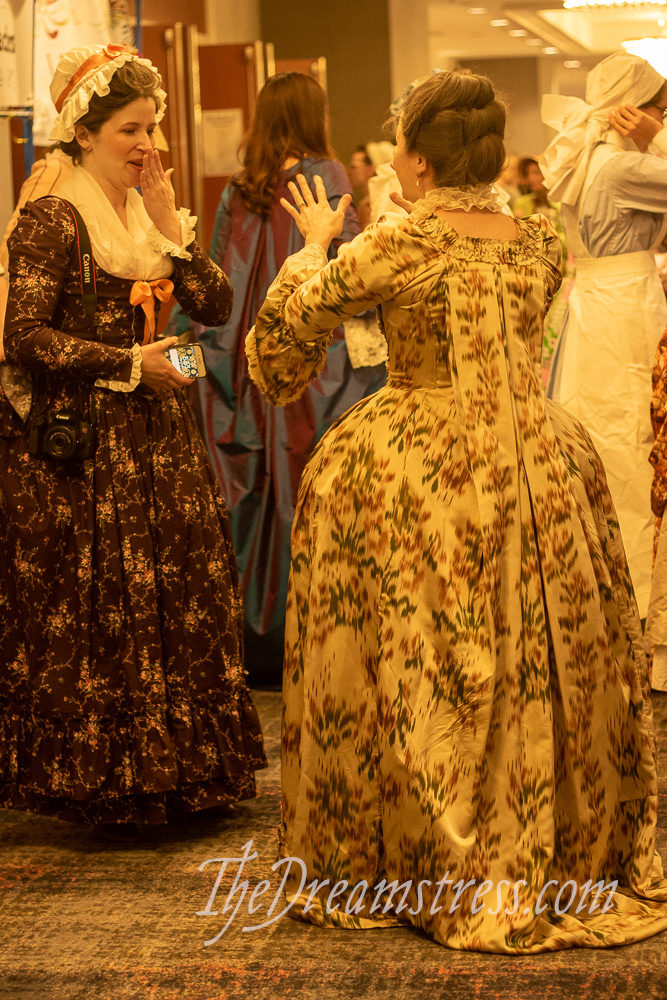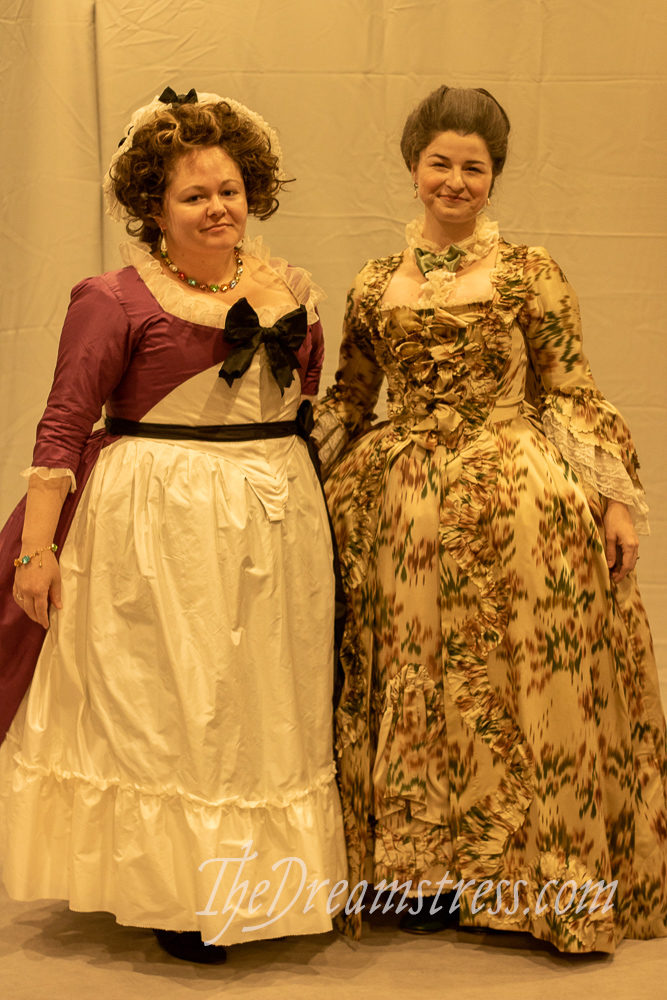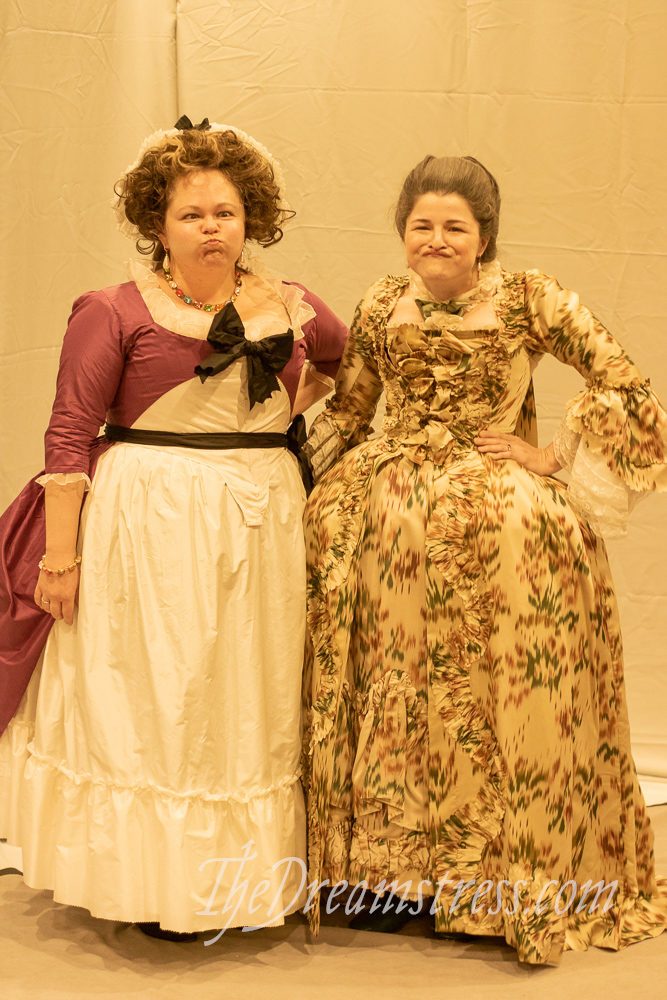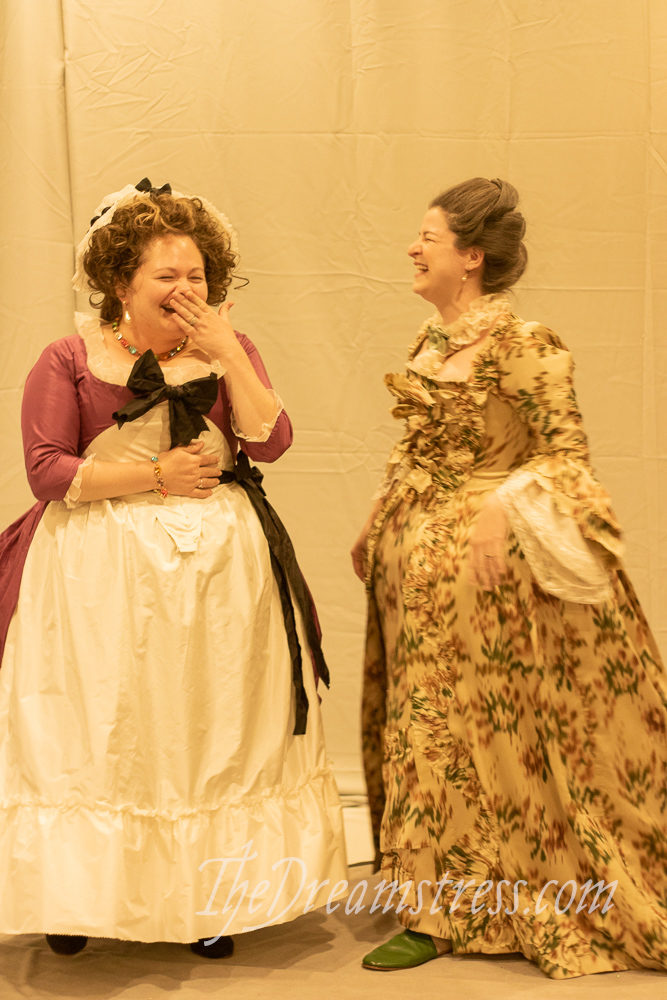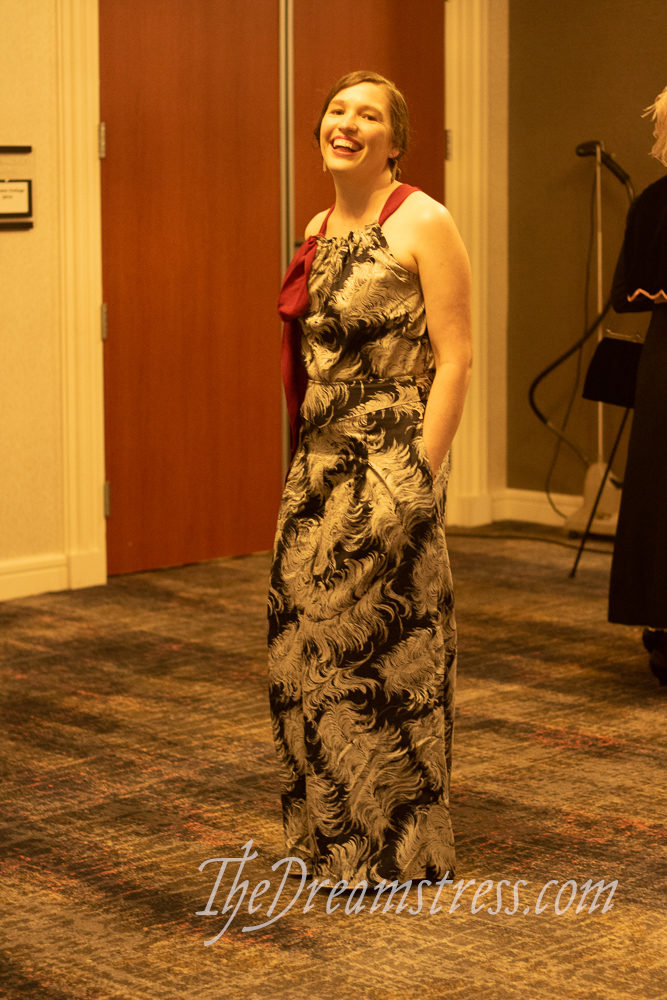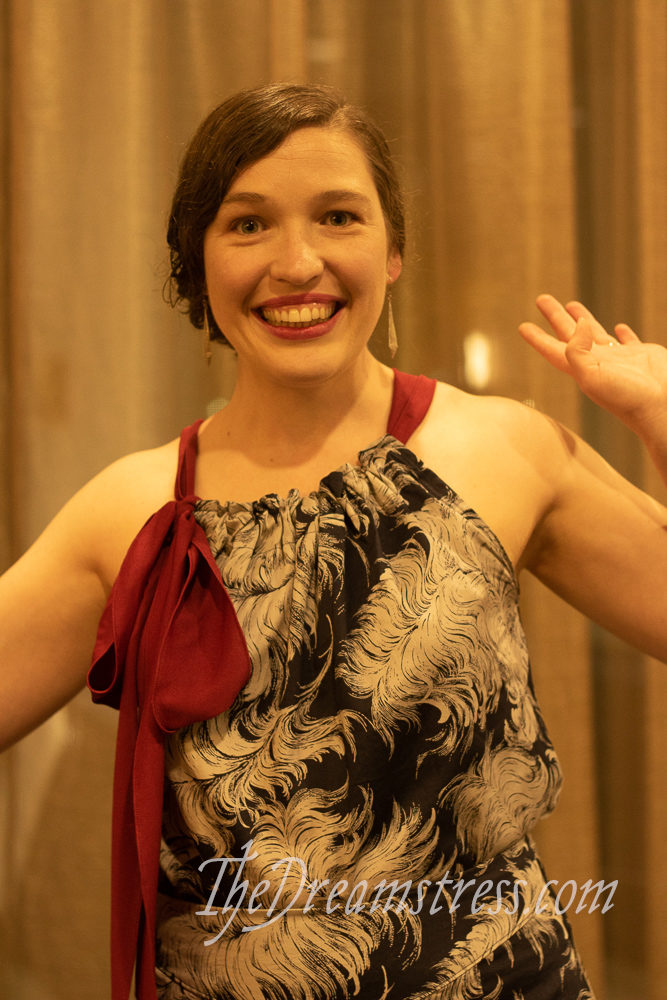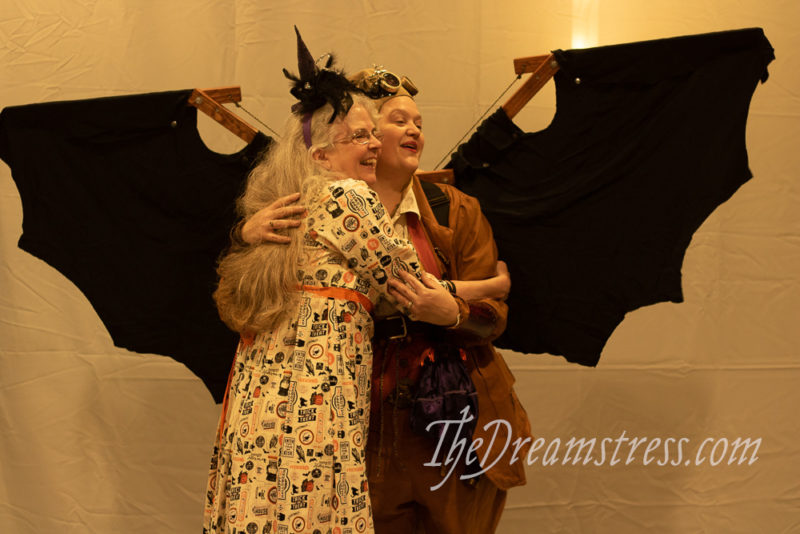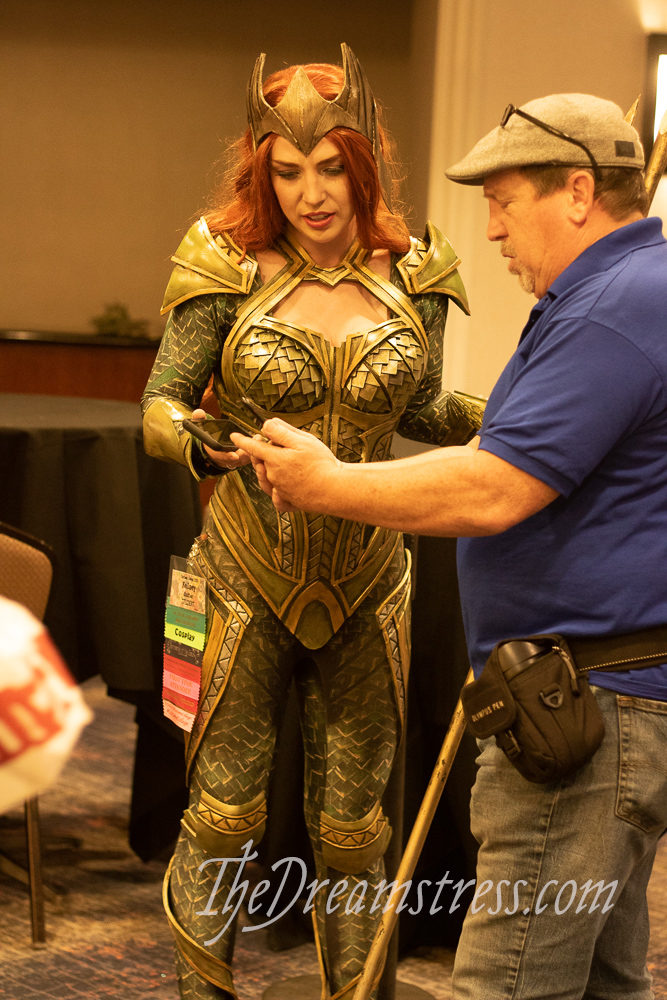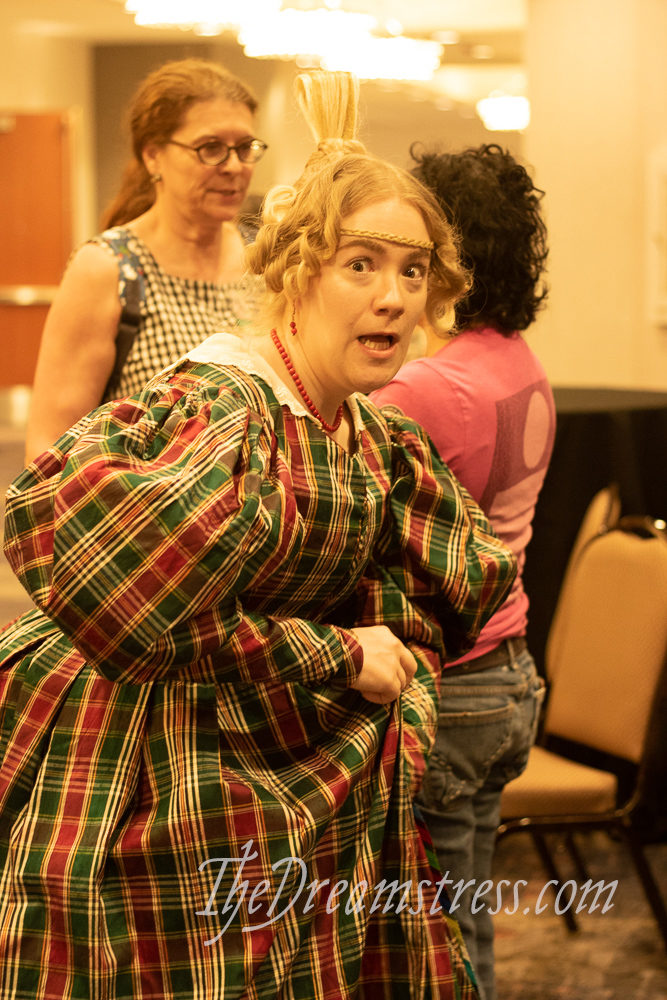Sorry all, jet-lag has done a number on me this week, and I’m very behind with Rate the Dress. So this week’s Rate the Dress will be a quickie: you’ll only have until the usual day to leave a comment. Hopefully you’re able to make up your mind quickly!
Last [last] Week: a late 1770s dress with fascinating fabrications
Last week’s Rate the Dress was another one of those ones where people either really liked it, or really didn’t. The lovers thought it beautiful and unusual, and the loathers thought it overly fussy, with dull colours.
The Total: 8 out of 10
Nice but not amazing
This week: a 1920s dress in complementary velvet hues
Today’s Rate the Dress is less ornamented than last week’s, but while this 1920s robe de style does have a simple silhouette, it’s not devoid of decoration, with a braided sash and beaded hem.
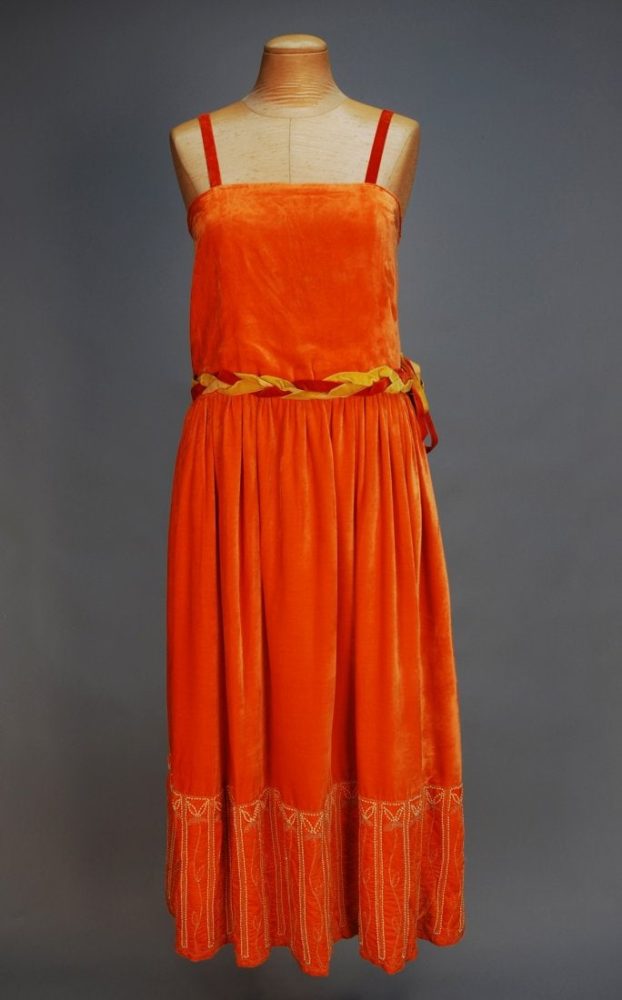
Robe de styles were the alternative to the very straight, sleek 20s silhouette, with fuller skirts, and a softer, more romantic style. At their most most extreme, robe de style had very full skirts, with extra fabric at the sides so they could be worn over 18th century inspired paniers. They were frequently quite ruffly and pastel-y.
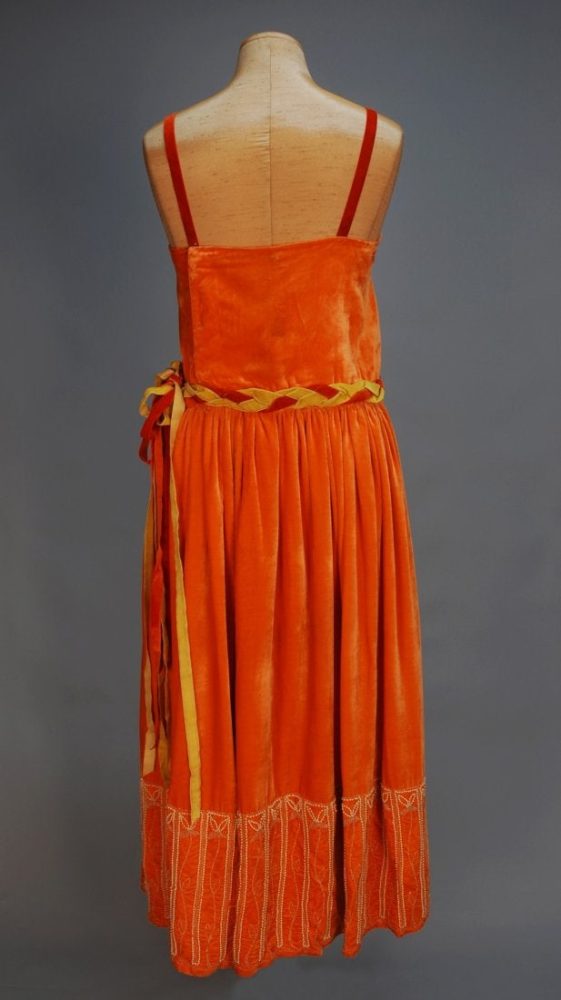
Like many dress styles, there is no firm line between what was a robe de style, and what was a standard 20s dress. This example, with its moderately full skirt, simple neckline, and vivid, modern colours, straddles the line. Only the full skirt pushes it into robe de style territory.
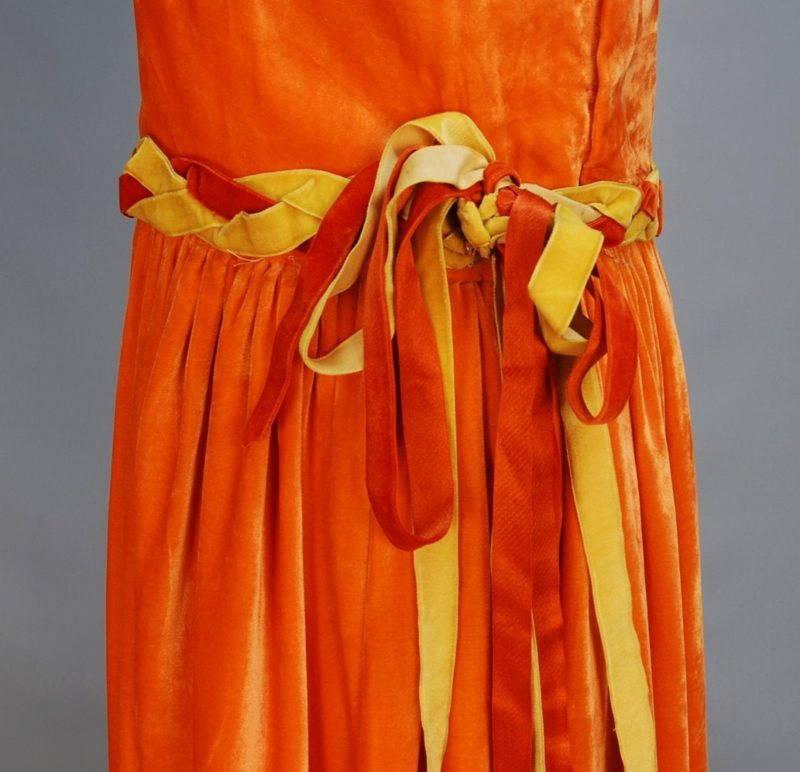
One can imagine a dress like this being worn by a woman who liked the shapes of robe de styles, but the more assertive colours and trims used.
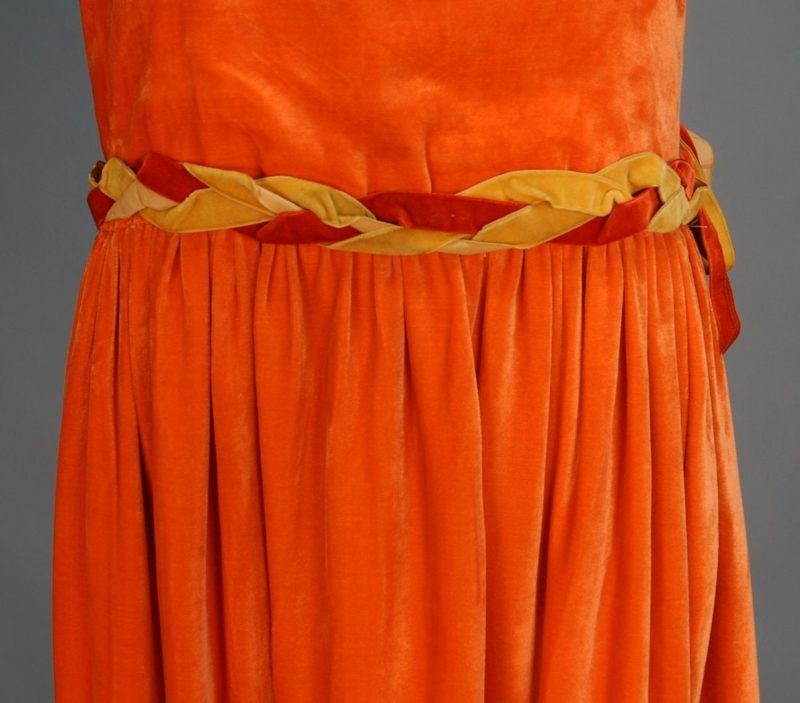
There is something quite artistic about the use of the complementary hues, and while the shape is simple, and the braided sash looks quite easy to do, the rather unexpectedly delicate beading around the hem speaks of the time, expense, and quality of the dressmaking.
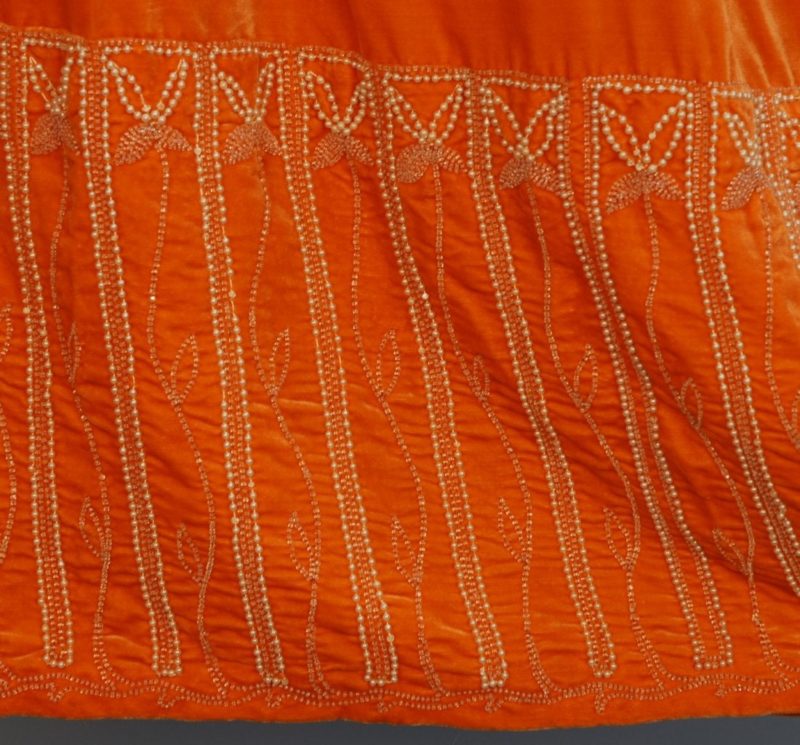
Rate the Dress on a Scale of 1 to 10
A reminder about rating — feel free to be critical if you don’t like a thing, but make sure that your comments aren’t actually insulting to those who do like a garment. Phrase criticism as your opinion, rather than a flat fact. Our different tastes are what make Rate the Dress so interesting. It’s no fun when a comment implies that anyone who doesn’t agree with it, or who would wear a garment, is totally lacking in taste.
(as usual, nothing more complicated than a .5. I also hugely appreciate it if you only do one rating, and set it on a line at the very end of your comment, so I can find it! And 0 is not on a scale of 1 to 10. Thanks in advance!)

